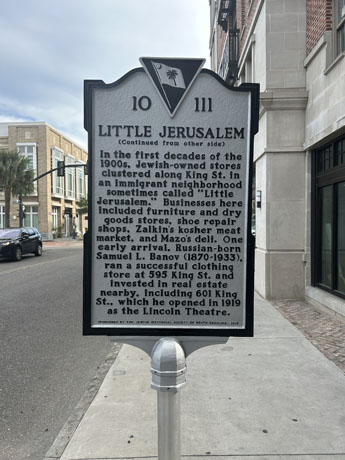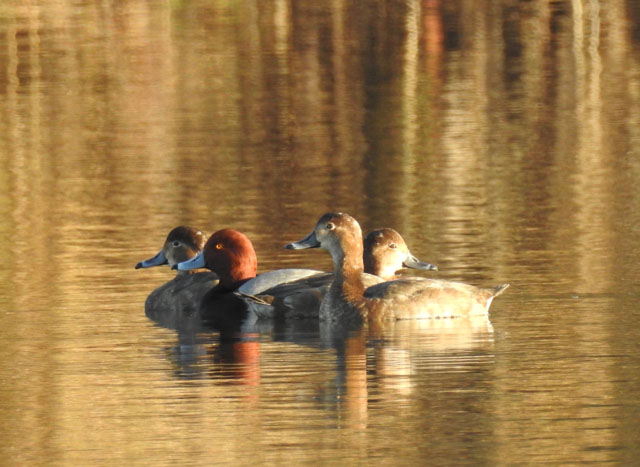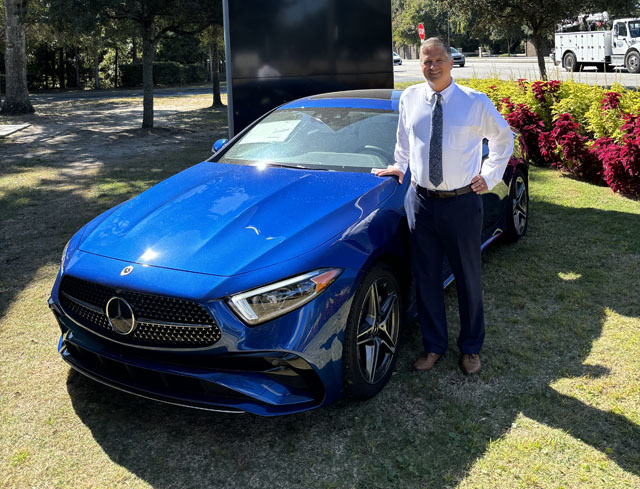Jewish History in Charleston
02 Nov 2023
Celebrating Francis Salvador, martyr of the American Revolution
By Tim Lowry
Photos by Jenny Peterson


The ancient Festival of Lights, known as Hanukkah, commemorates the rededication of the Second Temple in Jerusalem. The eight days of Hanukkah take place in the month of Kislev (December) and commemorate the cleansing of the ancient Jewish holy site after its desecration by the Syrians around 165 BC. Among other stories and traditions, Jewish people all over the world retell the great exploits of the Maccabees who fought to defend Jewish religion and culture during a time of great oppression.
Hanukkah celebrations have been a part of the cultural fabric of Charleston from nearly the very beginning with the first Jewish citizens arriving in the colonial city about 1695. With religious tolerance as a guiding principal in the founding documents, Jewish immigrants found the Colony of Carolina to be a haven from persecution in Europe.
The growing indigo industry was one of several economic opportunities for Jewish entrepreneurs. One such indigo planter was Francis Salvador. Born in England, he immigrated to South Carolina in the 1770s to cultivate indigo on about 7,000 acres of backcountry land. Arriving in the colony just as political winds were whipping into a frenzy, Salvador would be caught up in a fight for freedom that might have reminded some of the ancient struggle of the Maccabees. By this time, the Jewish community of Charleston was prominent enough to have established the synagogue Kahal Kadosh Beth Elohim (KKBE) and a Jewish burial ground of note in the city of Charleston.
Jewish merchants enjoyed a vibrant religious life, a unique cultural identity and were regarded as productive citizens playing an important role in the life of the City of Charleston and the overall success of the state of South Carolina.
Francis Salvador Becomes the First Jewish Member of a Legislative Assembly in American History
Francis Salvador was only one of nearly two dozen men from the local congregation who would serve in The Revolutionary War. He was selected as one of ten deputies representing the Ninety-Six District in the Provincial Congress (present-day Greenwood County). This elected body worked to develop a state constitution and draft a missive to the royal governor of South Carolina laying out colonists’ grievances against the King.
In most colonies, there were injunctions against non-Protestant citizens serving in such roles, but apparently Salvador’s religious convictions were no impediment to his serving in this official capacity. According to In Custodia Legis (a blog from the Library of Congress) Francis Salvador would become the first Jewish person to give his life in the cause of the American Revolution. At the beginning of 1776, Cherokee allies of the British began raiding frontier settlements. In July, they launched attacks in the Ninety-Six District. When Salvador became aware of the attacks, he rode to the plantation of Major Andrew Williams, a soldier in the South Carolina militia who later became a Brigadier General in the continental army, to alert the militia. This thirty-mile dash to warn patriots of the coming enemy earned him the nickname “Paul Revere of the South.” For the following month, Williamson led the militia on a campaign throughout the region.
On July 31, Williamson, Salvador, and 330 militia men fell into an ambush at the Keowee River. Salvador was shot in the battle. Cherokee fighters found him lying among the weeds, scalped him, and left him for dead. In his Memoirs of the American Revolution, John Drayton recounts Williamson’s discovery of Salvador after the battle: “When I came up to him after dislodging the enemy and speaking to him, he asked whether I had beaten the enemy. I told him ‘Yes.’ He said he was glad of it and shook me by the hand and bade me farewell, and said he would die in a few minutes.” Salvador was 29 years old. There is a memorial plaque in Washington Square in honor of Francis Salvador it reads in part: Born an aristocrat, he became a democrat; an Englishman, he cast his lot with America; true to his ancient faith, he gave his life for new hopes of human liberty and understanding.
Because of Francis Salvador’s sacrifice and the distinguished service of his fellow congregants, the Jewish community of Charleston would continue to grow and thrive. In fact, by 1800 Charleston had the largest, most cultured, and wealthiest Jewish community in America. However, the growth and prosperity of the community was not without its challenges. Fire would destroy the original KKBE synagogue, but it was rebuilt in 1840. A second synagogue, Berith Shalome, later called Brith Sholom Beth Israel, was formed in 1854. The Civil War brought extreme hardship to the community but Brith Shalom managed to remain active and provided kosher meat as well as matzo for Passover during those turbulent and unstable years. Even though the war left many Jewish families decimated and impoverished, they would rebuild. By the early 20th century Upper King Street in downtown Charleston was often called “Little Jerusalem” with Jewish-owned businesses that included furniture and dry goods stores, shoe repair shops, a kosher butcher, and deli.
This area was also home to the Lincoln Theatre, a business of particular note in the time of racial segregation for providing a venue showcasing popular films and vaudeville acts for African American audiences. A historic marker on King Street documents this period of important history. The Jewish community of Charleston continues to thrive today with a total population of approximately 10,000 people. The two historic synagogues, which are still in operation, were joined by a third, Synagogue Emanu-El in 1947. Currently, there is a movement supported by the Charleston Jewish Federation to further document the many historic and cultural contributions of Jewish citizens to the historic city. This includes efforts to have Upper King Street named to the National Register of Historic Places.
Tim Lowry is a Southern raconteur from Summerville. Learn more at www.storyteller. TimLowry.com.












